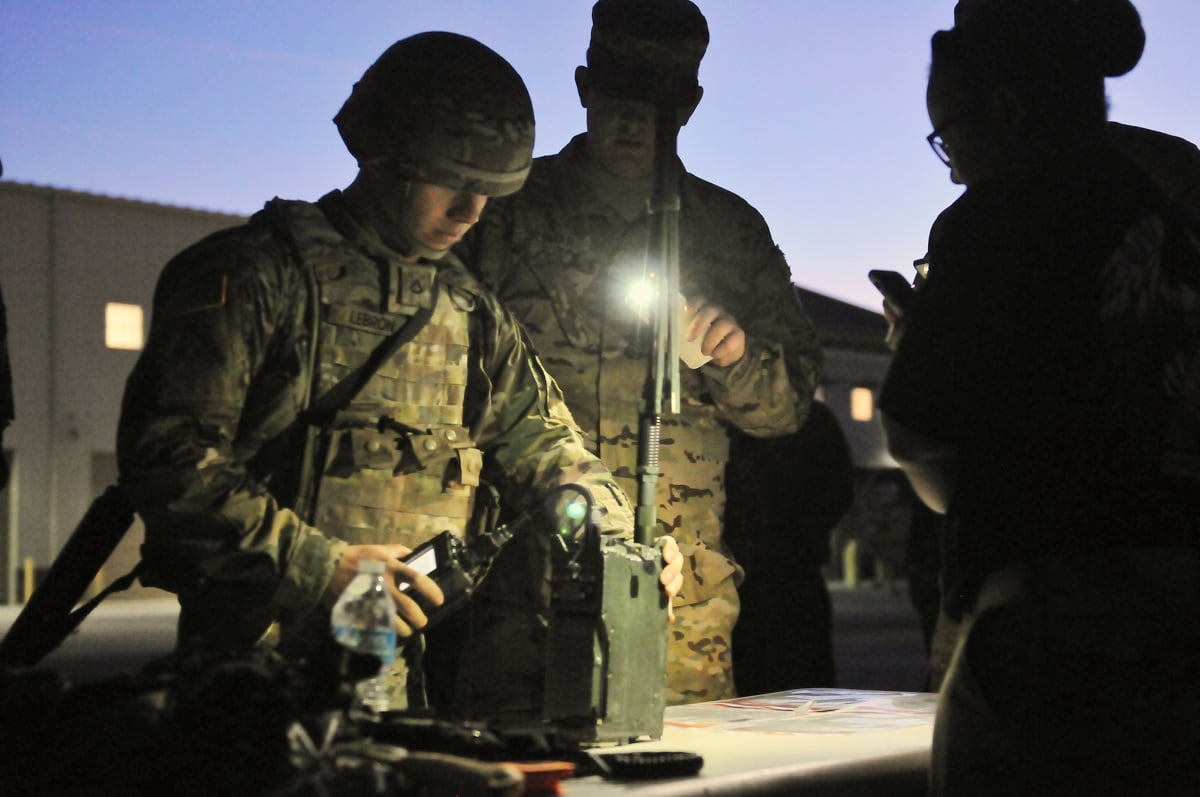Huntsville, Ala. — Harris Corporation has unveiled its new two-channel leader radio designed specifically for the Army at the Association of the U.S. Army’s Global Force Symposium this week, with expectations it will be chosen as one of the two radio deisgns to be purchased by the service soon.
The Army is expected to move forward with procuring two-channel leader radios in the May timeframe. The new contract could be worth nearly $4 billion.
The process was held up due to a protest filed by Persistent Systems, which builds mobile network radio technology, last October. The Government Accountability Office denied the protest earlier this year.
Click here for the latest news from AUSA’s Global Force Symposium.
The radios are expected to have the capability to communicate with Single Channel Ground and Airborne Radio (SINCGARS) and Soldier Radio Waveform (SRW). The radio is the successor to the single-channel Rifleman Radio, currently in limited use, but the service is deviating from full scale acquisition of the single-channel radio.
Harris and Thales were both selected to provide single-channel radios to the Army through competitively awarded contracts for lot orders.
Harris and Thales will again compete for orders for the two-channel radio when the Army does move forward by awarding both companies indefinite delivery, indefinite quantity contracts.
“It remains to be seen what exactly [the Army’s] acquisition strategy is, but in the short-term, we understand they are going to effectively amend the IDIQ for the single-channel radio to provide the leader radio to both Harris and Thales and over time we will compete for those orders,” Dana Mehnert, Harris Corporation’s senior vice president and chief global business development officer, told Defense News in a recent interview.
The Army moved away from procuring a single-channel radio because there are “a lot of advantages” to having both channels instantiated in a single radio, Mehnert said. “You can run two missions at once, so you can be getting live video on one channel and you are communicating, coordinating fires on the other channel.”
Additionally, a two-channel radio has the ability to crossband communications up and down the chain of command, Mehnert said, “so you can have coming in from one source, one waveform or one frequency and you can immediately retransmit it to another person.”
The leader radio is based off a radio the company is already providing to Special Operations.
Harris’ AN/PRC-163 Army Radio design has flexibility to add waveforms and new capabilities down the road. While interoperability with SINCGARS is necessary, as there are a half a million SINCGARS radios out there around the world, so is ensuring the radio can work with the established constellations of satellites such as Mobile User Objective System (MUOS).
“Our perspective is, the key thing is that you get a radio platform that can run the waveforms that you need today and will need in the future,” Mehnert said, whether they are waveforms Harris creates itself or conjured up by the government or a third party. “Your radio should be able to use all of them,” he added.
Room for growth
The leader radio has enough headspace to add capabilities over time, Jeff Smith, Harris’ vice president of business development for the U.S. Army and Special Operations Command, said in the same interview. “This radio has enormous capability to a point we can envision having signals based threat warning capability in the radio, [intelligence, surveillance and reconnaissance] video feed module capability and, here in the near future, Iridium SATCOM mission module capability.”
While Harris is focused on the leader radio for the Army, it’s also looking at what it can provide in the future as the Army restructures and re-energizes its network. The service made a drastic move to curb its tactical network – the Warfighter Information Network-Tactical – and prioritize capability that can survive in a contested electromagnetic spectrum.
Harris is confident the Army will move forward with the HMS Manpack radio and the leader radio as key components to the lower tactical network going forward. Harris also provides a new version of the HMS Manpack to the Army.
The Army’s new network strategy emphasizes the desire to recapitalize its high-frequency radios with a next-generation HF radio capability. “We have a brand new next-gen HF radio that is ideally suited for that,” Mehnert said.
Harris even provided the Army’s first Security Force Assistance Brigade deployment to Europe with its AN/PRC-160 HF radio. The radio provides 10 times the data rates of the previous generation radio, Mehnert said.
“That is in the early stages, sort of remains to be seen how they are going to go forward with the program,” he said.
Harris is also watching the Army’s long-awaited next move on what it will do to acquire an airborne-tier capability. The company had developed a radio for the Army’s Small Airborne Networking Radio program based on its ground-based radios, but the service is moving away from procuring SANR in favor of something else.
“We still need a new airborne radio platform,” Mehnert said, adding the company has a multi-channel radio family on both ground-based and airborne platforms, “so we are excited to see what future direction they go on the airborne side.”
Jen Judson is an award-winning journalist covering land warfare for Defense News. She has also worked for Politico and Inside Defense. She holds a Master of Science degree in journalism from Boston University and a Bachelor of Arts degree from Kenyon College.








